In this issue of the IoT M2M Times, we explain a complete IoT project for the first time. We explain the project including the selection of radio modules and antennas. Telling this story is possible because it is an EU funded project and have permission to document it.
Table of contents:
Rescue drones for forest workers
Cellular radio
SIM card
LwM2M Server
5G/LTE antenna
Bluetooth
DECT
LoRa 2400
Radio direction-finding
Patch antenna for 2400 MHz or 1900 MHz
Notes on the project
Rescue drones for forest workers
Working in the forest involves a high level of risk. Accidents are usually characterised by severe personal injuries. In order to increase the chances of the injured person surviving, quick initiation of first aid measures is necessary. Direct routing of rescue workers to the scene of the accident is essential. Lone working is forbidden in cases of extreme risk. If an emergency occurs and the casualty does not have a functioning emergency call system or there is no connection, no emergency call can be made. In the worst case, this can mean that the accident is only discovered after several hours delay.
In Germany’s largest low mountain range, the Black Forest, there is very often no connection to a mobile phone network.

Vodafone and DT Coverage map
Coverage of Vodafone and DT networks in the Black Forest
To tackle this problem, the German inventors of Focus Infocom in Darmstadt had an awesome idea that came within the scope of an EU funded project. Each forestry worker’s vehicle will be equipped with a drone. In an emergency, the drone rises, flies over the injured person and establishes a connection to the mobile phone network. The connection via a voice call on the 5G/ LTE network always works. This has already been tested with a German drone manufacturer using normal Android. Focus Infocom then contacted us.
Our task now is to design a link with for a voice connection from drone to the ground. As part of this we are given the lattitute to select all the radio modules and antennas that will be required.
Cellular radio:
A PCIe card with 5G and LTE is used. This makes it possible to change the cellular module at any time and adapt it to other countries. The LTE / 5G drone with a ground to air relay function is suitable for many other applications. The relay radio can be set up in different ways. Using a PCIe card, the drone can be equipped modularly and reconfigured with ease for different field use cases.
SIM card:
SIM cards from Crout www.crout.de are used for the SIM card. SIM cards from Crout can receive profiles remotely, just like an iPhone. When it is switched on, the drone checks the country and then receives the right profiles from the local network operators. At a height of 30 to 40 metres, you can safely reach any of the country’s 3 5G/LTE radio networks.
In the profiles, we can specify the preferred sequence of the 5G/LTE networks for an attempted connection. The SIM card is not roaming in Germany but is basically three SIM cards in the form of one. In total, there can be up to 7 SIM cards on one SIM . When the drone goes up at the start of work and a test is carried out, it is possible to check which network is the better network for that location. This network is then set as the default. The settings for the default can vary from region to region.
To avoid problems in border areas, foreign networks are blocked immediately so that the calls are not routed back to Germany via third countries.
LwM2M server:
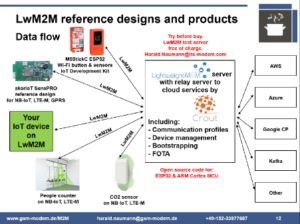
lwM2M server architecture
LwM2M application examples
We have chosen LwM2M from Crout for the protocol. Crout thus supplies not only the SIM card but also the test server for LwM2M.
Unlike MQTT and CoAP, LwM2M is much more than just a transmission protocol for data. One of the remarkable features of LwM2M is device management. Since LwM2M was co-influenced by mobile network operators at the OMA, their experience in managing wireless phones has been incorporated. Connection and Logon to the LwM2M server is possible in various very secure ways. The bootstrap start-up of a device is also standardised under LwM2M. Necessary firmware updates are also managed by the LwM2M server.
The communication of a device is standardised with profiles and resources. Through the mandatory profiles Device (/3), Connectivity monitoring (/4), Firmware update (/5), Location (/6), any LwM2M device from any manufacturer can communicate worldwide with any LwM2M server on our beautiful blue planet. After successful registration, the LwM2M server asks which profiles are supported and then knows whether it is a water meter, presence detector, level meter or tracking device, for example. An LwM2M device can also support several profiles in parallel.
For the LwM2M server, the rescue drone is a kind of router or also a kind of locating device. All functions required by the rescue drone are already specified via the LwM2M protocol. The project team can therefore immediately focus on programming the application. Everything else is already specified through LwM2M.
5G/LTE antenna:
The 5G/LTE MIMO antenna will be a classic PCB antenna integrated into the main PCB of the 5G/LTE relay located below the drone. This saves the purchase of LTE antennas and reduces the delivery time to 0 days and reduces the cost to €0.
There are several options for the voice connection:
Bluetooth:
For Bluetooth audio, there are ready-made Bluetooth headsets that can be worn under a helmet. The range of Bluetooth is limited to 10-50 m in the original specification.
If you take a closer look at the transmission power and the sensitivity, you will notice that the free-field range is much greater. Of course, trees in the forest are an obstacle to radio waves, but we have a similar situation in buildings. A wall dampens radio waves, but we know that Bluetooth signals can still be received through a wall.
The actual attenuation of radio waves at 2400 megahertz is best determined in a field test. For this purpose, classic Bluetooth modules with the AT command interface are operated in data communication mode and a message is sent from the ground to the drone in the air. The drone measures the receiving level and sends this back to the Bluetooth module on the ground. The receiving level is also measured there. This means that in one ping, the losses through the tree canopy are determined twice.
Since Bluetooth data transmission is very fast, a large number of measured values are recorded in a short time. Directional planar antennas are used to optimise penetration.
In real operation, a Bluetooth audio connection is then used. Since hands-free devices and headsets for employees in industrial plants, oil platforms and also forestry workers are already available on the market, the development of dedicated intercom device on the body of the forestry worker can possibly be saved.
DECT:
Ready-made headsets and hands-free devices are already available on the market for this radio standard as well. Therefore, the development of an intercom device can also be saved.
The field test procedure is the same as for Bluetooth. The device on the ground sends a signal to the aircraft in the air and the latter acknowledges back to the ground. Again, two measurements are taken.
Conclusion
LoRa is very well known in the Sub-GHz range. There is now a LoRa version for 2400 MHz. With a simple voice codec, it would be possible to transmit voice signals via LoRa. The achievable link budget is certainly greater with LoRa 2400 MHz than with Bluetooth. But if Bluetooth or DECT meet the requirements, then a development based on LoRa is not necessary.
For the relay station on the aircraft, no great effort is required for the audio codec. Since a Raspberry Pi is planned for the relay station, standard codecs can be used for audio transmission.
For the headset under the helmet, custom development would be necessary. However, since there are German companies that have already developed intercom devices with Bluetooth and DECT, such a custom development is technically not a problem.
Radio direction finding:
A special antenna can be used to determine the direction and angle of the injured person on the ground. LoRa in the 868 MHz range may be used in this case. This method is already in use for tracking people buried under snow avalanches. Although a much lower transmission frequency is used , the measuring method would be the same. The measuring antenna on the aircraft receives the output signal twice. The direction to the injured person can be determined via the field strength and the phase shift.
Radio localisation is only necessary, however, if the audio signal is too strongly attenuated by the trees and the aircraft has to take up a position as precisely as possible above the injured person. Another advantage of radio direction finding is that it can be used to determine a more accurate position of the casualty.
GNSS:
The aircraft is equipped with a GNSS antenna and a GNSS receiver. Because the drone is in the air, receiving the satellite signal is not a problem. The GNSS antenna will probably be a classic ceramic patch antenna mounted on the main PCB.
Patch antenna for 2400 MHz or 1900 MHz:

A Patch Antenna
To increase the maximum link budget, a patch antenna with an antenna gain of 10 dB is used. This patch antenna has circular reception. Because of the circular polarisation, it does not matter whether the antenna on the ground is polarised horizontally or vertically. The received signal at the relay station of the drone is then only influenced by the attenuation of the air, the attenuation of the trees and the body attenuation of the injured person.
Notes on the project:
The rescue drone is a truly innovative projects for a unique application. The use of radio technologies is extensive: In addition to the 5G module, Bluetooth will probably also be used for audio transmission; determination of position via GNSS is obligatory; the LoRa module at 868 MHz will make it possible to determine the position of an injured person or an object at a great distance.
For the forestry workers, GNSS and Lora are not necessary for the project, because the service vehicle launching the flying drone is nearby.
As already mentioned, the rescue drone can be used for many other applications. Because the radio modules are planned in a modular way, further interesting applications in wireless IoT can be implemented by swapping the modules.
The next special aspect of this project is that the project manager at Focus is a former colleague with whom I worked at Ascom 35 years ago. For me, the first job was in the world of wireless electronics. The project manager was also very new to the world of wireless data transmission at the time. The word IoT and the word M2M didn’t exist yet. We used both standard radios and trunked radios to transmit data at 1200 bit/s to send messages from one place to another. We were pioneers in the Internet of Things for 35 years without knowing that IoT would eventually be specified.
The lesson here is that if you keep your current contacts, you can work with former colleagues to realise an innovative IoT project 30 years from now. This project came in the fourth quarter of 2021, but the crazy thing is that, just like busses, a second 35-year-old contact came along to start a very innovative project with me in the fourth quarter. I have permission to write about this project as well. Stay tuned for that story.
Your wireless IoT projects
If you have a need for a custom antenna or are just starting a new innovative wireless IoT project, I would love to hear from you. Wireless IoT and antennas are my mission. Thank you in advance for your request to harald.naumann (at) lte-modem.com
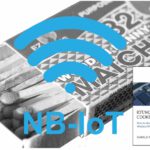
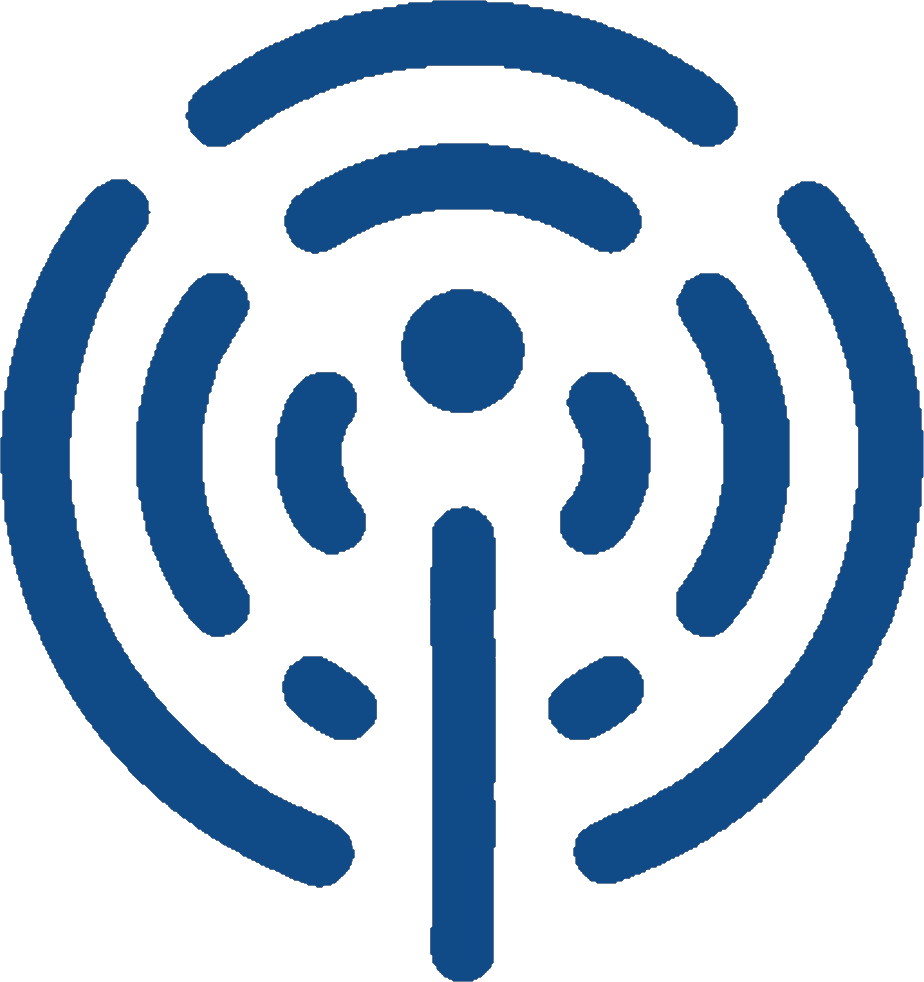

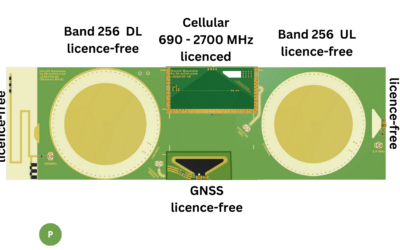
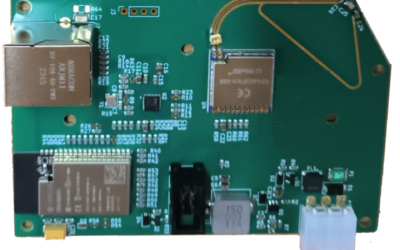
0 Comments